12 blood pressure-friendly foods
Looking for delicious eats that help reduce hypertension? Add these to your grocery list.
Updated on November 11, 2022
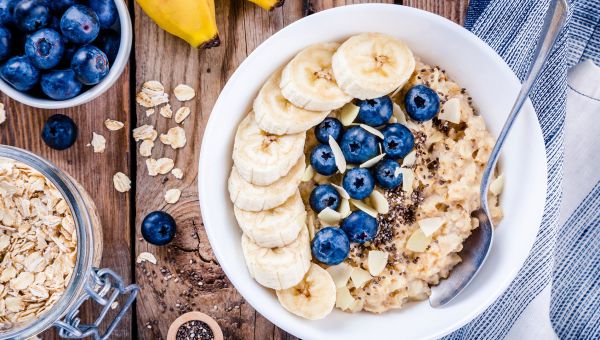
Do you have high blood pressure? One way to help get a handle on hypertension is to work on crafting a nutritious diet.
Studies have shown that following a heart-healthy eating plan such as the Dietary Approaches to Stop Hypertension (DASH) diet can help lower blood pressure and reduce levels of low-density lipoprotein (aka LDL, or “bad” cholesterol). Filled with fruits, vegetables, whole grains, low-fat dairy, and nuts, the DASH Diet provides lots of blood pressure-friendly nutrients like fiber and potassium while limiting saturated fats, trans fats, and sodium.
Eating too much sodium can contribute to high blood pressure. Due in large part to salty processed foods like canned soups, cold cuts, and chips, the average American adult consumes more than 3,400 milligrams (mg) of sodium each day. The American Heart Association recommends having no more than 2,300 mg daily, with the goal being less than 1,500 mg a day, especially for people with heart disease.
Fortunately, the following delicious, heart-friendly foods are low in sodium and fit the DASH plan. Learn how they can help improve your cardiovascular health.
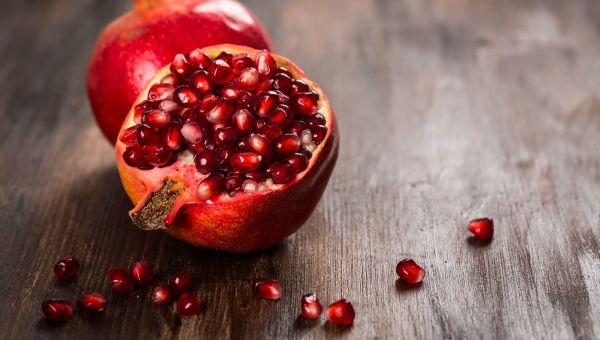
Pomegranates and pomegranate juice
If you or a loved one has high blood pressure, pomegranate juice may be a good add to your grocery list. Some research, including a 2017 meta-analysis published in the journal Pharmacological Research, suggests that drinking the ruby-red beverage each day may lead to a small decrease in systolic blood pressure, the top number in a blood pressure reading that describes the pressure your blood exerts on your arteries during a heartbeat.
Make sure to buy 100 percent pure juice with no added sugar. Better yet, eat the vitamin- and fiber-rich fruit itself. To extract its delicious arils (seeds) with less mess, cut the pomegranate in two and whack each half with a heavy spoon over a bowl. Alternately, place each half of the fruit in a bowl of water and remove the arils with your fingers. Once you’re finished, sprinkle them on your salad or in your oatmeal—or eat them on their own by the handful.
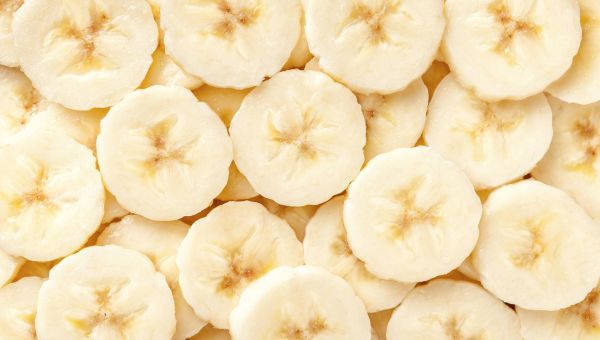
Peaches, potatoes, and bananas
Cheap and plentiful, bananas, potatoes, and peaches are rich in potassium, which has often been linked to lower stroke risk in studies. The mineral works by encouraging your kidneys to filter more blood pressure-elevating sodium out of your bloodstream. It also helps tiny blood vessels relax and makes pressure sensors in artery walls function more efficiently. A 2016 meta-analysis published in the Journal of the American Heart Association determined that the higher your potassium intake, to a certain point, the lower your risk for stroke. Around 3,500 mg per day was associated with the lowest stroke risk.
If you’re not getting your fill, don’t take a supplement unless advised by a medical professional. It’s safest to get your potassium from food.

Tea
Want a delicious drink to help your blood pressure? Many studies suggest that tea may be the way to go. In fact, a meta-analysis published in 2020 in the journal Complementary Therapies in Medicine showed that regular tea intake had a positive effect on blood pressure in individuals with elevated blood pressure levels. This review found that drinking tea on a regular basis could lower systolic blood pressure by 4.81 mm Hg and diastolic blood pressure by 1.98 mm Hg. (Diastolic blood pressure is the bottom number in a reading and the pressure your blood exerts on your arteries as your heart rests between beats). The longer a person drank tea (beyond three months), the higher the decrease in both measures. Green tea seemed to have a more powerful effect than black tea.
How might tea lower blood pressure? It’s high in flavonoids, which may help blood vessels relax and could help keep their linings healthy. Tea is also a good substitute for sugar-sweetened, calorie-laden beverages like soda, which has been found in some studies to boost blood pressure.
When you’re making tea, keep sugar and cream to a minimum. Be aware that store-bought ice teas and chai lattes are often high in sugar and calories.
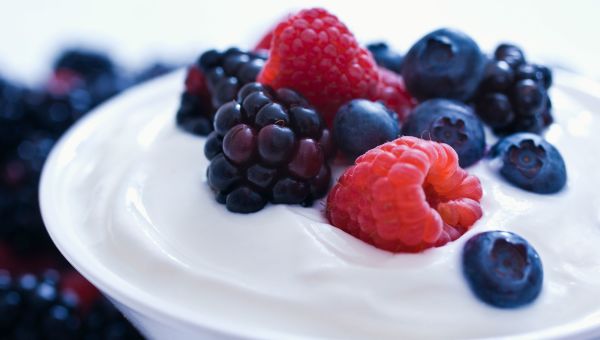
Low-fat dairy
Head down the dairy aisle to help keep your blood pressure in check. Diets rich in low-fat dairy have been linked to lower rates of hypertension. These foods are filled with blood-pressure-friendly minerals like calcium, magnesium, and potassium. And since low-fat dairy is lighter on calories, it may be more helpful than full-fat dairy, which packs more calories and can contribute to weight gain and hypertension.
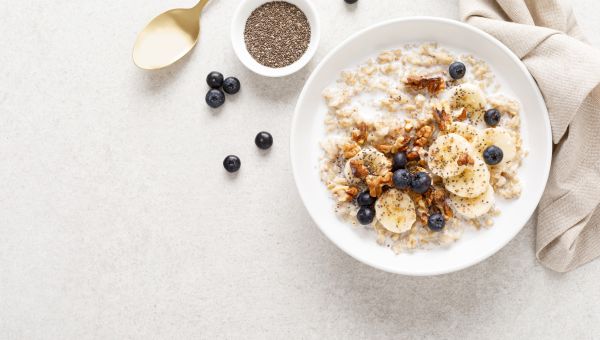
Oatmeal
Research shows that eating a diet rich in whole grains is linked to a lower risk of hypertension and cardiovascular disease. Whipping up a bowl of oatmeal in the morning is a delicious and easy way to get more grains into your day.
A review published in Food Chemistry in 2022 showed that certain oat components—including soluble fiber, phenolic compounds, beta-glucan, and other compounds—may aid in lowering blood pressure. That’s a powerful package of heart-protective benefits for one little grain. Shredded wheat, popcorn, brown rice, and whole grain bread are also excellent fiber-rich additions to a nutritious diet.
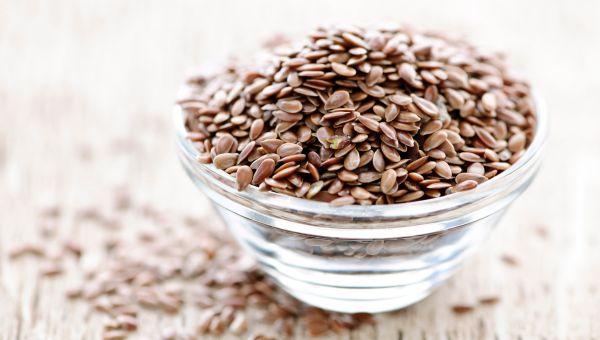
Flaxseed
Here’s a great tip for possibly improving your blood pressure: Sneak flaxseeds into your diet. You can include ground flaxseed in recipes for baked goods or mix flaxseed oil into your oatmeal, yogurt, or smoothie.
A 2022 meta-analysis published in Phytotherapy Research found that flaxseed oil consumption led to significant reductions of blood pressure in patients with metabolic syndrome or related disorders. The overall effect was a lowering of systolic blood pressure by 3.86 mm Hg and a 1.71 mm Hg reduction in diastolic blood pressure. (Metabolic syndrome is diagnosed when a person has three or more conditions including high blood pressure, high blood sugar levels, high triglycerides, or low levels of high-density lipoprotein, aka HDL or “bad” cholesterol. These conditions combine to raise one’s risk of heart disease and diabetes.)
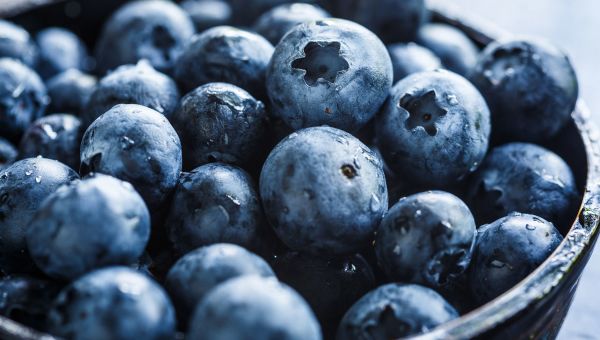
Blueberries
It’s no secret: Blueberries are good for your heart health. In a 2019 study of 40 healthy men published in The Journals of Gerontology, scientists found that consuming 1 cup of daily blueberries was linked to healthier blood vessels and lower systolic blood pressure. Researchers suggested that the anthocyanin content of the fruit had something to do with the benefits. Anthocyanins are plant chemicals known as flavonoids that are found in many dark-colored fruits and vegetables.
Similar benefits have also been seen in studies with cranberries, strawberries, and raspberries, as well as other fresh fruit.
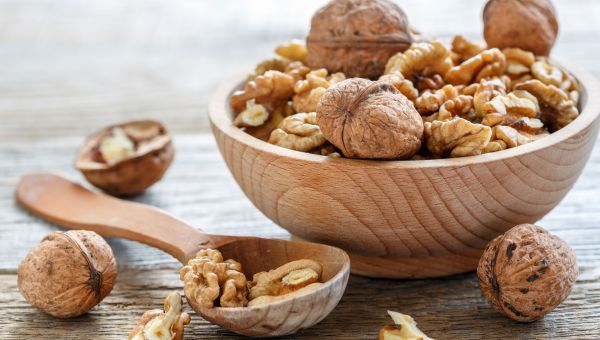
Walnuts and cashews
Eaten in moderation, nuts can provide a great boost to your cardiovascular well-being. The healthy fat in walnuts helps keep artery inflammation in check, while the magnesium—about 46 mg per 1/4 cup—can help lower both your systolic and diastolic blood pressure. You'll get 81 mg of magnesium in a little handful of cashews, too. That's a good start toward the 400 mg to 420 mg of magnesium you need daily.

National Heart, Lung and Blood Institute. DASH Eating Plan. Last updated December 29, 2021.
National Heart, Lung and Blood Institute. The Science Behind the DASH Eating Plan. Last updated December 29, 2021.
National Heart, Lung and Blood Institute. What Is Metabolic Syndrome? Last updated on May 18, 2022.
Hannah Gardener. Sodium, Potassium, and Stroke. American Heart Association. January 22, 2018.
Sahebkar A, Ferri C, Giorgini P, Bo S, Nachtigal P, Grassi D. Effects of pomegranate juice on blood pressure: A systematic review and meta-analysis of randomized controlled trials. Pharmacol Res. 2017;115:149-161.
Vinceti M, Filippini T, Crippa A, de Sesmaisons A, Wise LA, Orsini N. Meta-Analysis of Potassium Intake and the Risk of Stroke. J Am Heart Assoc. 2016;5(10):e004210. Published 2016 Oct 6.
American Heart Association. Understanding Blood Pressure Readings. 2020. Accessed July 31, 2020.
Li D, Wang R, et al. Effects and Mechanisms of Tea Regulating Blood Pressure: Evidences and Promises. 2019 May;11(5):1115.
Ndanuko RN, Tapsell LC, et al. Dietary Patterns and Blood Pressure in Adults: A Systematic Review and Meta-Analysis of Randomized Controlled Trials. Advances in Nutrition. 2016 Jan 15;7(1):76-89.
Mayo Clinic. Can whole-grain foods lower blood pressure? 2019. Accessed August 19, 2020.
Evans CE, Greenwood DC, et al. Effects of dietary fibre type on blood pressure: a systematic review and meta-analysis of randomized controlled trials of healthy individuals. Journal of Hypertension. 2015;33(5):897-911.
Rodriguez-Mateos A, Istas G, et al. Circulating Anthocyanin Metabolites Mediate Vascular Benefits of Blueberries: Insights From Randomized Controlled Trials, Metabolomics, and Nutrigenomics. The Journals of Gerontology. 2019 July;74(7):Pages 967–976.
Harvard Health Publishing. Potassium lowers blood pressure. 2017. Accessed July 31, 2020.
Harvard Health Publishing. Beating high blood pressure with food. 2019. Accessed July 31, 2020.
Rees A, Dodd GF, Spencer JPE. The Effects of Flavonoids on Cardiovascular Health: A Review of Human Intervention Trials and Implications for Cerebrovascular Function. Nutrients. 2018;10(12):1852. Published 2018 Dec 1.
Vincet M, Filippini T, et al. Meta-Analysis of Potassium Intake and the Risk of Stroke. Journal of the Americcan Heart Association. 2016 Oct;5(10):e004210.
Gomes Joda EMMs, Francisco Voltera A, et al. Effects of physical training and potassium supplementation on blood pressure, glucose metabolism and albuminuria of spontaneously hypertensive rats. Braz J Nephrol. July/Sept 2014;3(6).
Mahdavi-Roshan M, Salari A, et al. The effects of regular consumption of green or black tea beverage on blood pressure in those with elevated blood pressure or hypertension: A systematic review and meta-analysis. Complementary Therapies in Medicine. 2020;51:102430.
Li D, Wang R, Huang J, et al. Effects and Mechanisms of Tea Regulating Blood Pressure: Evidences and Promises. Nutrients. 2019;11(5):1115. Published 2019 May 18.
Aljuraiban GS, Stamler J, Chan Q, et al. Relations between dairy product intake and blood pressure: the INTERnational study on Macro/micronutrients and blood Pressure. J Hypertens. 2018;36(10):2049-2058.
Sawicki CM, Jacques PF, et al. Whole- and Refined-Grain Consumption and Longitudinal Changes in Cardiometabolic Risk Factors in the Framingham Offspring Cohort. The Journal of Nutrition. 2021;151(9):2790-2799.
Hernández-López R, Canto-Osorio F, et al. Soft drink and non-caloric soft drink intake and their association with blood pressure: the Health Workers Cohort Study. Nutrition Journal. 2022;21(1).
Bouchard J, Valookaran AF, Aloud BM, et al. Impact of oats in the prevention/management of hypertension. Food Chem. 2022;381:132198.
Mahmudiono T, Jasim SA, et al. The effect of flaxseed oil consumption on blood pressure among patients with metabolic syndrome and related disorders: A systematic review and meta‐analysis of randomized clinical trials. Phytotherapy Research. 2022;36(10):3766-3773.
Khalesi S, Irwin C, Schubert M. Flaxseed consumption may reduce blood pressure: a systematic review and meta-analysis of controlled trials [published correction appears in J Nutr. 2015 Nov;145(11):2633]. J Nutr. 2015;145(4):758-765.
National Institutes of Health Office of Dietary Supplements. Magnesium. June 2, 2022. Accessed October 10, 2022.
More On


video

article


video


video


video
